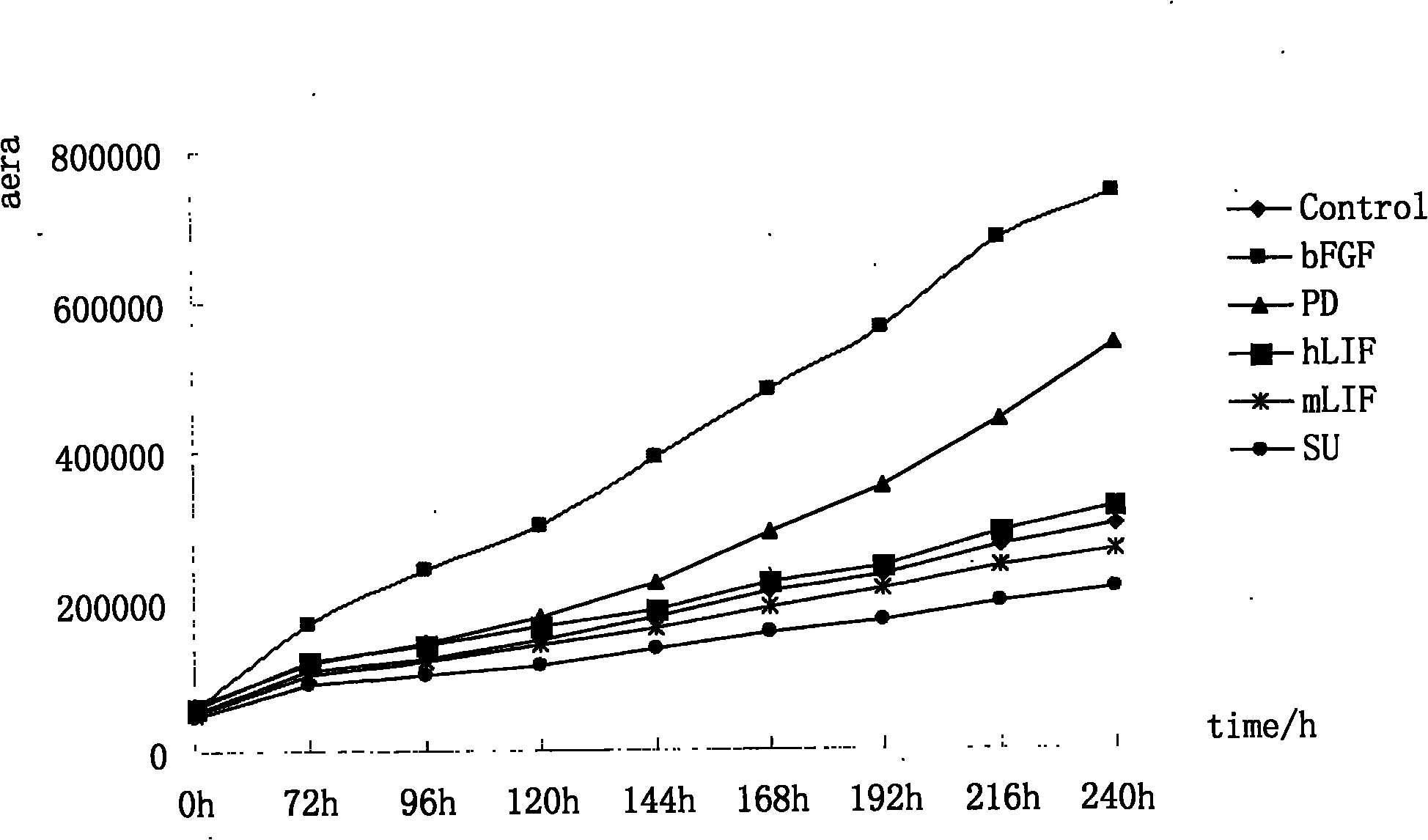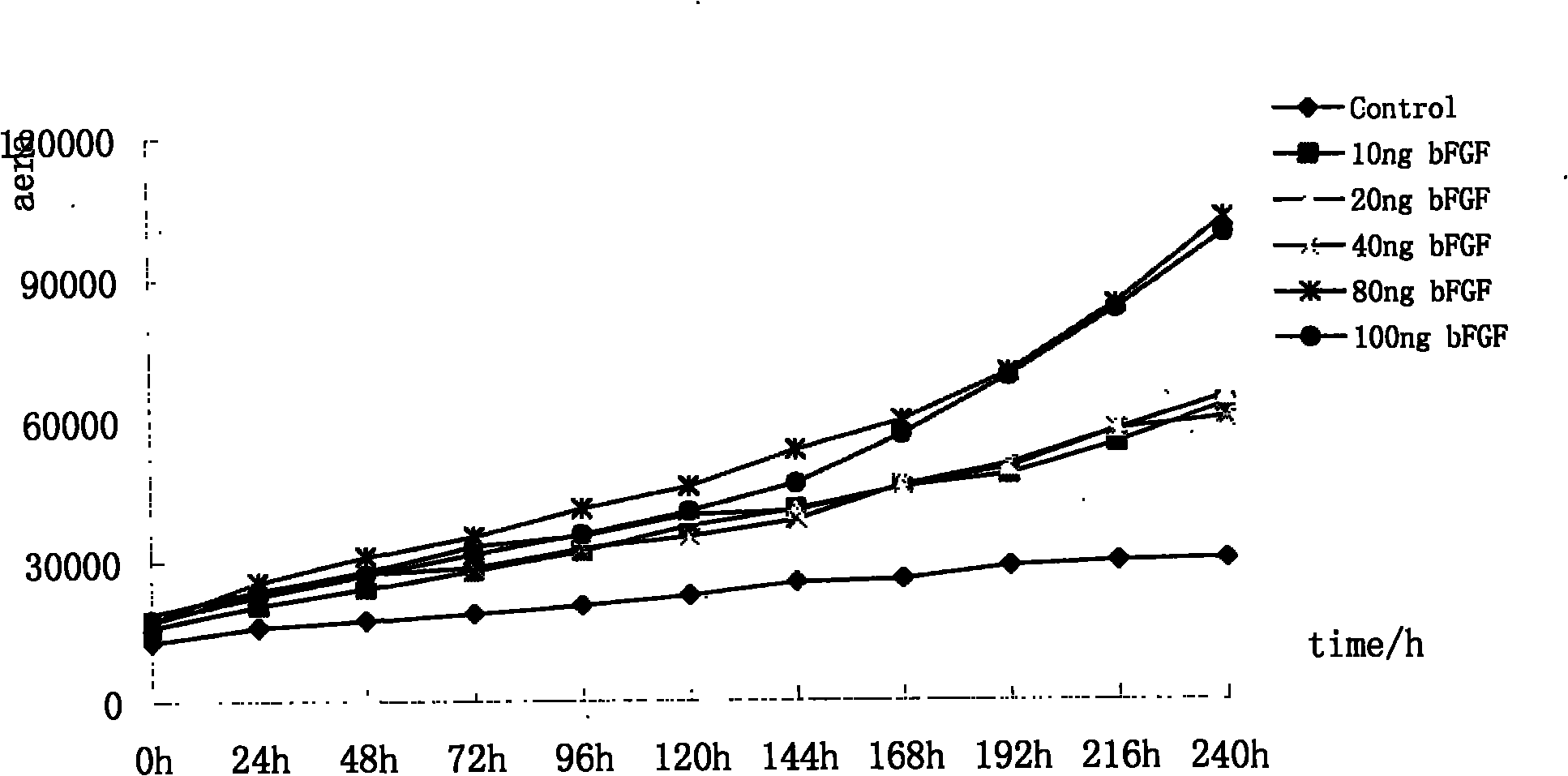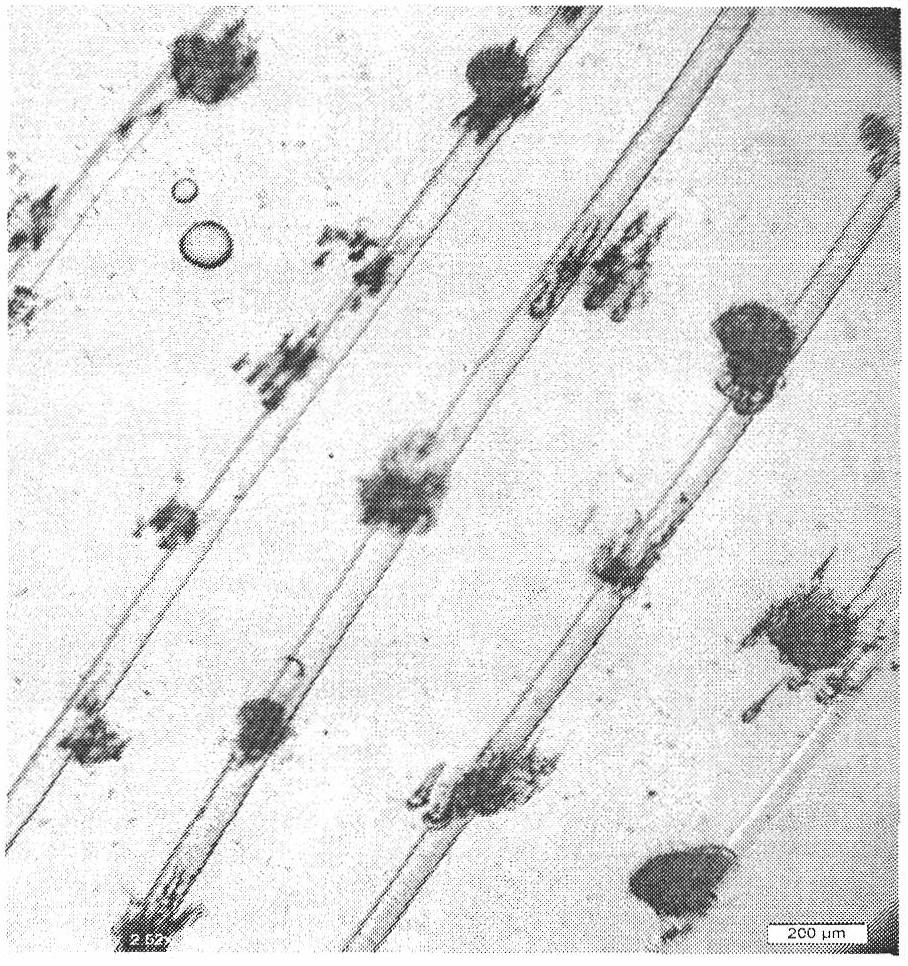Serum-free separating and culturing method for sheep embryo stem cell
A technology of embryonic stem cells and serum-free culture medium, applied in the biological field of embryonic stem cells, can solve the problems that restrict the research and application of ESC technology, achieve the effect of highlighting technological progress and expanding the research field
- Summary
- Abstract
- Description
- Claims
- Application Information
AI Technical Summary
Problems solved by technology
Method used
Image
Examples
Embodiment
[0043] Separation and culture method steps: collect 42 blastocysts obtained from sheep in vitro culture, use Tyrode'sSolution to remove the zona pellucida, inoculate the naked embryos in the sheep ESC serum-free culture medium provided by the invention, and use a 32-gauge needle to inoculate the naked embryos Embryos were fixed on the bottom of the culture dish, and at the same time, the inner cell mass of the blastocyst should be avoided as much as possible, and the nude embryo trophoblast cells should be peeled off to the maximum extent, and then placed at 38.6 ° C, 5% CO 2 Cultivate under saturated humidity conditions, and the primary culture time is 7 days (see image 3 , 4 Primary colonies), and then subculture once every 4 days by a conventional mechanical method at a rate of 1:2-1:4, and half of the culture medium was replaced every 48 hours during the culture period. Routine alkaline phosphatase staining was performed on the obtained 9th and 14th passage sheep ESCs to...
PUM
 Login to View More
Login to View More Abstract
Description
Claims
Application Information
 Login to View More
Login to View More - R&D
- Intellectual Property
- Life Sciences
- Materials
- Tech Scout
- Unparalleled Data Quality
- Higher Quality Content
- 60% Fewer Hallucinations
Browse by: Latest US Patents, China's latest patents, Technical Efficacy Thesaurus, Application Domain, Technology Topic, Popular Technical Reports.
© 2025 PatSnap. All rights reserved.Legal|Privacy policy|Modern Slavery Act Transparency Statement|Sitemap|About US| Contact US: help@patsnap.com



